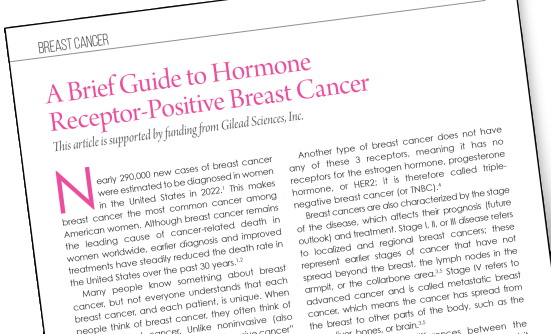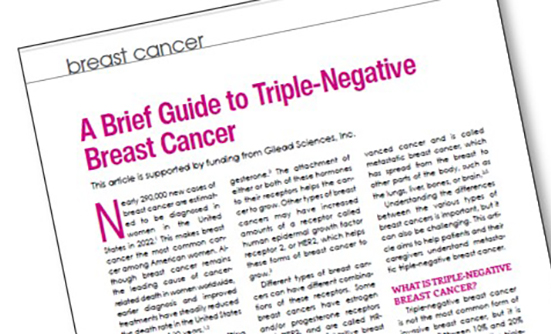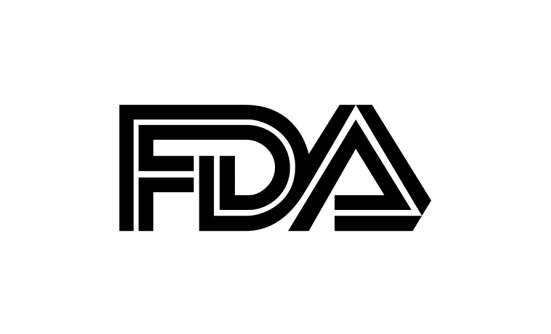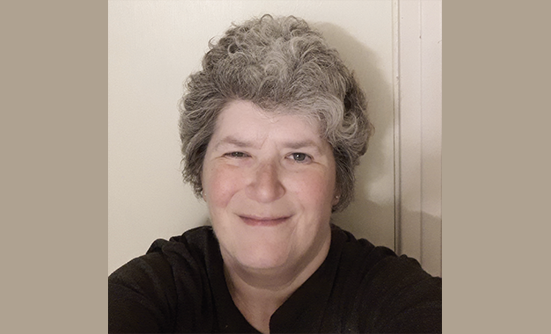Breast cancer is the second most common cancer among American women.1 In 2016, more than 245,000 cases of invasive breast cancer will be diagnosed in women and an additional 2,600 new cases will be diagnosed in men.1 Currently, there are more than 2.8 million breast cancer survivors in the United States.1 If diagnosed and treated before it spreads, 99% of patients with breast cancer will survive for at least 5 years.2
Risk Factors and Prevention
Although many people with breast cancer risk factors never have the disease, it is important to recognize these factors and monitor for any health changes that could be cause for concern. Some of the factors that increase the risk for breast cancer include3:
- Advanced age
- Alcohol use
- Obesity
- Race/ethnicity
- Family history of breast cancer
- Certain gene mutations
- Dense breasts.
Eating a healthy diet, getting regular exercise, and maintaining a healthy body weight can help to reduce the risk for cancer.4
Symptoms and Detection
Changes in the breast(s) and/or the surrounding areas, such as lumps, knots, pain, tenderness, nipple discharge, itchiness, soreness, rash, swelling, dimpling, puckering, redness, or warmth, should be discussed with your healthcare provider.2 National organizations disagree on the age to start screening mammography; however, it is universally agreed that women older than age 50 should have screening mammography every 2 years until age 74.5 Some women may benefit from earlier screening, so talk to your doctor about what age is right for you. For example, those with a family history of breast cancer may need to begin screening earlier, and options to reduce the risk can be explored.
Men can also have breast cancer and should therefore report any changes in their breast tissue to their doctor. Transgender women and transgender men are also at risk for breast cancer. The Fenway Institute recommends that transgender women who have received hormone replacement therapy and transgender men who have not had chest reconstructive surgery should have regular mammograms after age 50.6
Breast Cancer Disparities
White women have the highest incidence of breast cancer in the United States, but African-American women are most likely to die from the disease.7 Hispanic women may have more barriers to screening, and lesbian and bisexual women, as well as women with disabilities, are less likely to have annual mammograms.8
Although these disparities are not completely understood, a lack of medical insurance, lack of screening and early diagnosis, and unequal access to care are some of the reasons for differences in survival rates for different groups of women.
The good news is that the Affordable Care Act, which was passed into law in 2010, requires all new health insurance plans to cover annual mammography with no copayment for women age 40 and older. If you are concerned about your risk for breast cancer and/or your ability to access or pay for treatment, check the resources listed to help you navigate these challenges.
Be Your Own Advocate
If you or someone you love is diagnosed with breast cancer, it is important to be a strong self-advocate. The National Cancer Institute booklet, What You Need to Know About Breast Cancer, lists some questions you may want to ask your doctor9:
- What stage is my disease?
- Has the cancer spread?
- What options do I have for treatment, and which do you recommend?
- What are the benefits, risks, and side effects of each treatment?
- How can I prepare for treatment?
- How will you manage my symptoms?
- Will my insurance cover the treatment?
- Should I or my family members seek genetic testing?
- What kind of support services are available to me and my family at this hospital or practice?
- Is a clinical trial right for me?
A breast cancer diagnosis can be scary, but there are many resources available to help patients take control of their health, reduce their risk, and proactively address their disease.
For daily information on being an engaged patient, follow us on Twitter @PreparedPatient.
References
- American Cancer Society. Breast cancer. 2016. www.cancer.org/cancer/breastcancer/detailedguide/breast-cancer-key-statistics.
- Prevent Cancer Foundation. Breast cancer. www.preventcancer.org/learn/preventable-cancers/breast.
- Susan G. Komen. Breast cancer risk factors. 2015. ww5.komen.org/Breastcancer/Breastcancerriskfactorstable.html.
- National Cancer Institute. Breast cancer prevention. 2016. www.cancer.gov/types/breast/patient/breast-prevention-pdq.
- US Preventive Services Task Force. Final Update Summary: Breast Cancer: Screening. 2016. www.uspreventiveservicestaskforce.org/Page/Document/UpdateSummaryFinal/breast-cancer-screening.
- Fenway Health. Breast Cancer Facts for Transgender Women & Men. www.thecentersd.org/pdf/health-advocacy/breast-cancer-facts-for.pdf.
- National Cancer Institute. Cancer health disparities. 2008. www.cancer.gov/about-nci/organization/crchd/cancer-health-disparities-fact-sheet.
- Susan G. Komen. Disparities in breast cancer screening. 2016. ww5.komen.org/BreastCancer/DisparitiesInBreastCancerScreening.html.
- National Cancer Institute. What you need to know about breast cancer. 2012. www.cancer.gov/publications/patient-education/wyntk-breast.pdf.
Patient Resources
Avon Foundation
www.avonfoundation.org/programs/breast-cancer
Living Beyond Breast Cancer
www.lbbc.org
National Cancer Institute
www.cancer.gov/types/breast
Susan G. Komen
ww5.komen.org
















